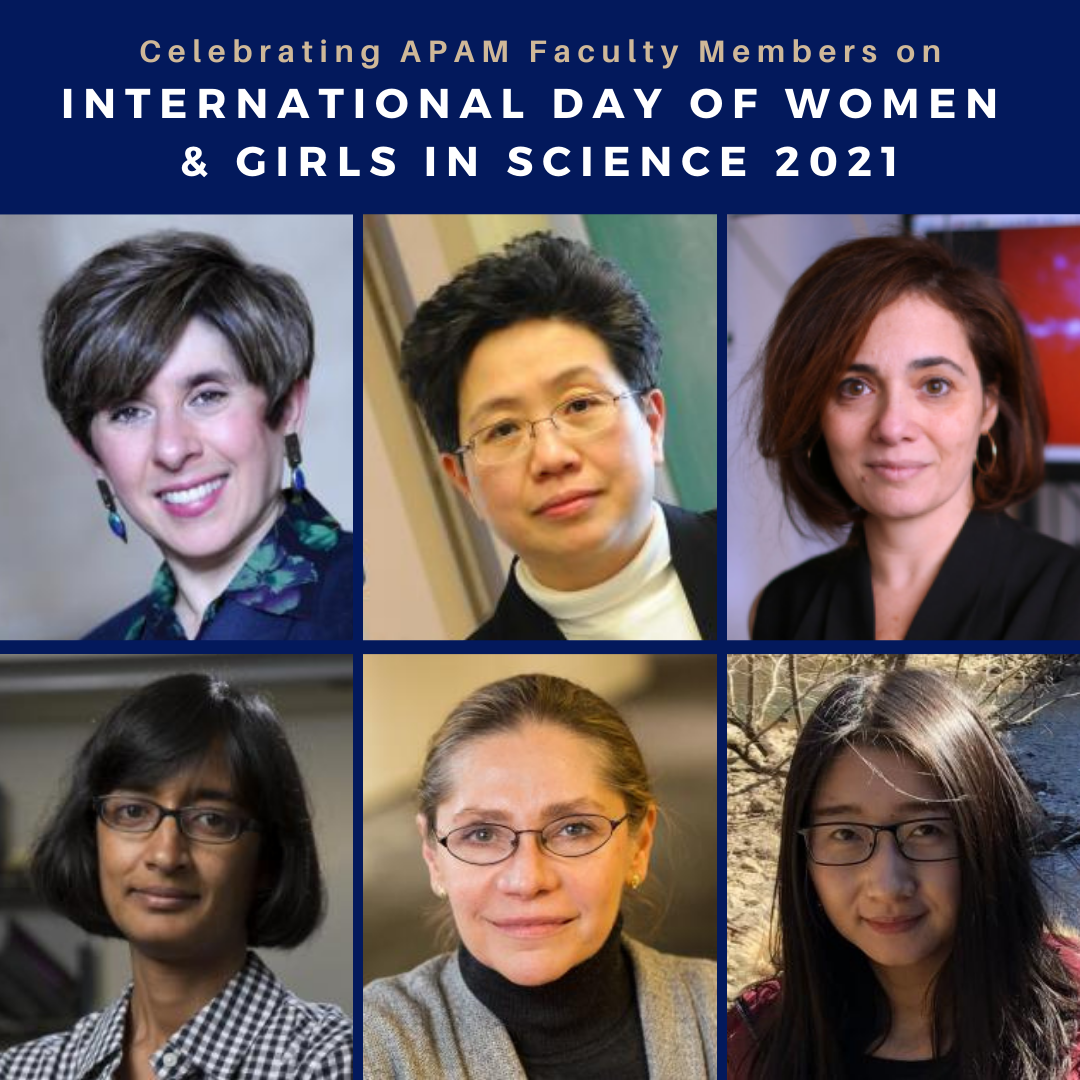Celebrating APAM Faculty on International Day of Women & Girls in Science

We are proud to celebrate APAM Department faculty members on International Day of Women & Girls in Science!
(Top row, left to right)
Katayun Barmak, the Philips Electronics Professor of Applied Physics and Applied Mathematics and of Materials Science Engineering, probes the nature of materials in order to understand their properties and how to engineer them. Such work aids the development of new and improved materials for engineering systems. She investigates the differences in materials structure at macro-, micro-, and nano-scales and uncovers the impact these differences have on a material’s properties and ultimately the performance of engineered systems they are made for. In her work in Columbia Nano Initiative’s new Electron Microscopy lab, she studies matter at magnifications not possible with optical microscopes. Her areas of particular interest are materials synthesis, structure and phase transformations.
Siu-Wai Chan, Professor of Materials Science Engineering (joint appointment in Earth and Environmental Engineering) studies size-dependent properties of nano-ceramics and crystalline interfaces. Chan’s research has focused on nano-ceramics and crystalline interfaces. Many working devices such as varistors use novel electrical transport properties of grain boundaries which is a type of crystalline interface. A part of Chan’s research studies the size-dependent mechanical properties of nano-ceramics which can yield better understanding of ceramics in general. Another part identifies interfaces and boundaries that have beneficial electrical responses to facilitate the intelligent use of interfaces in devices.
Michal Lipson, the Eugene Higgins Professor of Electrical Engineering and Professor of Applied Physics, focuses on areas where nanophotonics has a big impact, both fundamentally and technologically. Her main topics of research include novel photonic materials and fabrication, silicon photonics and non-reciprocity, nano-magnetism and thermal control, nanophotonics for neuroscience, optomechanics, nonlinear and quantum optics, and sensing and optofluidics. Silicon photonics – presentation, or all-optical control of light on a silicon chip, is one of the very few areas in physics ever to be adopted in industry within less than 10 years of its conception.
(second row, left-right)
Latha Venkataraman, Vice Provost for Faculty Affairs and the Lawrence Gussman Professor of Applied Physics and Professor of Chemistry, measures the fundamental properties of single molecule devices, seeking to understand the interplay of physics, chemistry, and engineering at the nanometer scale. The underlying focus of her research is to fabricate single molecule circuits, a molecule attached to two electrodes, with varied functionality, where the circuit structure is defined with atomic precision. She measures electronic conduction, single bond breaking forces, thermoelectric and electrochemical properties of these devices.
Renata Wentzcovitch is a Professor of Materials Science and Engineering in the Applied Physics and Applied Mathematics Department, Earth and Environmental Sciences. Her research is devoted to computational quantum mechanical studies of materials at extreme conditions, especially planetary materials. She addresses electronic, structural, and vibrational properties from a fundamental and inter-related perspective. develops and applies materials simulation methods to study materials properties at high pressures and temperatures, especially minerals at planetary interior condition.
Lu Zhang is the Ju Tang Chu & Wu Ping Chu Assistant Professor of Applied Mathematics. Her research interests are in the area of numerical and theoretic analysis of Partial Differential Equations (PDEs) and applied mathematics in general. In particular, she focuses on developing high order discontinuous Galerkin methods in studying various PDEs with physical and biological backgrounds, such as advective wave equations, semi-linear wave equations, chemotaxis models, population dynamics models, etc. PDEs serve as the basic languages that describe the spatial-temporal dynamics of the phenomena within the physical and biological sciences.
